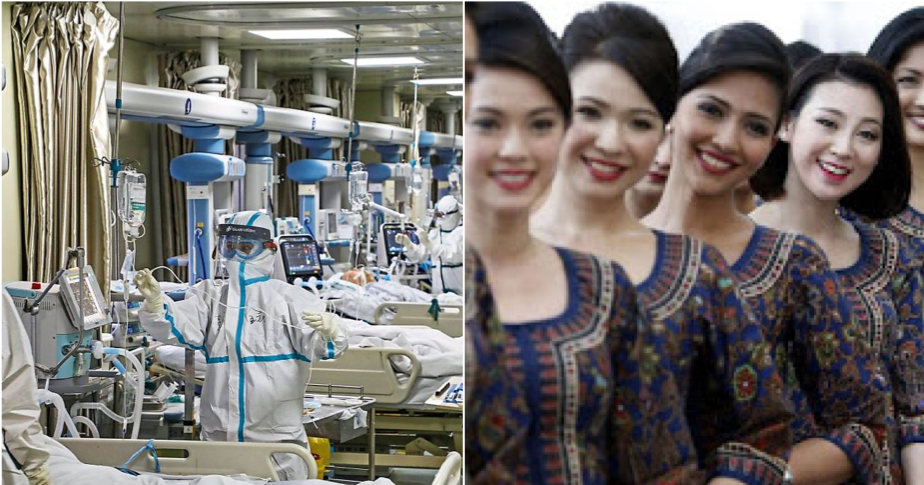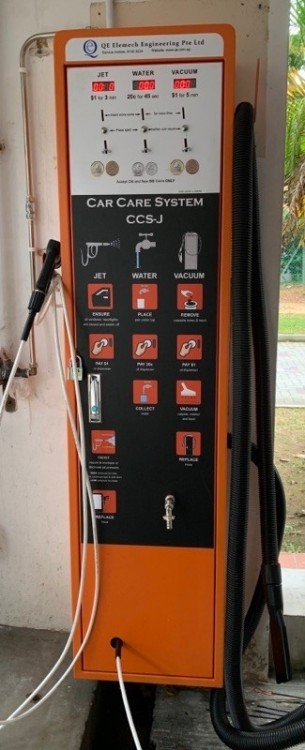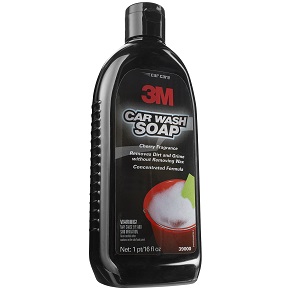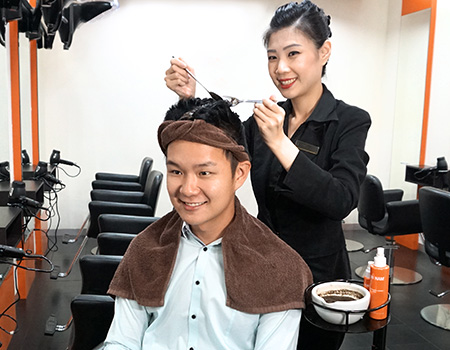Search the Community
Showing results for tags 'care'.
-
More financial support from Government for palliative care from 2024: Ong Ye Kung SINGAPORE – Subsidies for palliative care will go up and the MediShield Life claim limits for inpatients will also be adjusted from the first half of 2024 to improve affordability and access to such services. The limit on the MediSave lifetime withdrawal for home palliative care and day hospice patients who use their own MediSave will also be removed. The moves are made in relation to the recommendations of the 2023 National Strategy for Palliative Care (NSPC), which was launched on Saturday. They will also allow palliative care providers to expand their capacity to support more clients who prefer to die at home. Minister for Health Ong Ye Kung said his ministry will significantly increase financial support. Speaking at the 8th Singapore Palliative Care Conference on Saturday, he added that to align this financial support to the subsidy framework for inpatient care at acute hospitals, the Government will ensure a minimum 50 per cent means-tested subsidy for palliative care, and up to the current maximum of 80 per cent. “With this change, almost all palliative care patients will see an increase in subsidies, by up to 55 percentage points,” he noted. “MediShield Life claim limits will be raised from $250 and $350 per day for general and specialised inpatient palliative care, respectively, to $460 and $500 per day. These limits will be sufficient to fully cover nine in 10 subsidised patients,” Mr Ong said. The lifetime MediSave limit of $2,500 will also be lifted for all home palliative care and day hospice patients using their own MediSave, regardless of their conditions. But the limit will remain for patients who tap MediSave accounts belonging to a family member, to preserve it for the latter’s own healthcare needs. Mr Ong added that the changes will help in bringing about smoother transitions – from acute hospital care to palliative care, and between palliative settings, “whether it is inpatient, day or home hospice”. “Compassionate discharges from hospital to home are critical moments, but they encounter barriers today. Many families are concerned about coping with care at home for a patient who is dying, and we need to address this,” he said. “We will therefore be doing more to smoothen the process, with timely access to affordable equipment, curated resources and training for caregivers, and respite care services,” he added. Sharing the story of his grandmother, Mr Ong said she was 80 when she was diagnosed with end-stage lung cancer. “Each time I visited her at the hospital, she would tell me she wanted to go home. She said that one night at the hospital felt like a month,” he added. “I had no doubt she would have wanted to go home, even if it was to pass on.” She died “surrounded by loved ones gathered around her hospital bed”. A 2014 Lien Foundation survey found that 77 per cent of Singaporeans wanted to die at home, but only 30 per cent did. The latter figure rose to 39 per cent in 2022. For those who want to die at home, Mr Ong said: “We are putting in place standardised checklists and resources so that caregivers know what to expect and are equipped with the necessary medications in various situations, and especially when their loved ones are in their final hours. It is quite common that they get sent back to the A&E (department).” The Ministry of Health (MOH) is also expanding the home-based respite care scheme, with hospitals now making direct referrals for those who are compassionately discharged home. “The turnaround time has come down quite significantly, and we are still monitoring the numbers,” Mr Ong noted. To complement the financing shifts for palliative care services, MOH will also enhance drug and vaccine subsidies for long-term medical care services, such as nursing home, home medical and palliative care. Currently, drug and vaccine subsidies are extended only to long-term medical care patients from lower- to middle-income households. Moving forward, Mr Ong assured that regardless of household income level, drug subsidies will be made available to all patients receiving palliative care from MOH-funded providers from the fourth quarter of 2024. “Singapore citizens will receive drug subsidies of at least 50 per cent, and permanent residents (PRs) will receive at least 25 per cent,” he said. Currently, those from higher-income households do not benefit from drug subsidies. All these financing changes will be implemented in phases from the first half of 2024, Mr Ong added. Palliative care providers will receive about $15 million more support a year – with this “plus the support of their donors, they will be able to expand their care capacity significantly”. The present estimated capacity of home palliative care is about 2,000 patients at any point in time. The three major providers – HCA, Assisi and Dover Park Hospice – are committed to increasing home palliative care capacity by about 40 per cent, or 800 places, by end-2025, and more over the following few years. With this growing capacity, Mr Ong said there is a need to recruit and train local and foreign staff. “Our nursing homes, home care and family doctors can and will need to play a larger role in caring for their patients approaching their end of life. We need to train them, and provide them with more support,” he added. “We will pilot new care models, for instance, having home medical and nursing providers care for their patients with complex chronic conditions and frailty, towards the end of life, with the support of specialised palliative care providers.” For manpower, he reiterated that apart from recruiting locally and overseas, granting PR status to foreign healthcare workers’ dependants is worth consideration. First drafted in 2011, the 2023 NSPC was reviewed in the past year, and the outcome will shape the future of palliative care in Singapore and ensure that it meets the rising needs of individuals facing serious illnesses as the country becomes a super-aged society by 2026. Chairman of the NSPC workgroup and co-chair of the Singapore Hospice Council (SHC) clinical services steering committee Angel Lee said: “The refreshed NSPC has to plug into the wider transformation in our local healthcare, to create collaborative service and financing models so that palliative care is accessible, of quality and supported by the whole community.” The outcome of the review was announced at the biennial four-day conference at the Sands Expo & Convention Centre, which has over 100 local and overseas speakers as well as more than 500 participants. https://www.straitstimes.com/singapore/more-financial-support-from-government-for-palliative-care-from-2024-ong-ye-kung
-
In the midst of all the negative news, this is one piece of beautiful news... literally https://www.channelnewsasia.com/news/singapore/covid-19-singapore-airlines-care-ambassadors-hospital-manpower-12608118 Oh my... Can you imagine... If I'm an inpatient and I'm expecting the rubbish food given to me, and along comes the Singapore Girl, and says: "Hello!" Today, we offer these uncooked toufu and eggs or the overfried chicken, served with plain water... Suddenly everything will taste better! Wooo... Or get them to teach you to wear a mask ... like putting on the life vest 🙂 Or better yet, teach HCW to wear the PPE... A patient's quarantine pr NCID stay just got sweeter... hmm.... 😉 Their roles can be extended.. As for social distancing... I can imagine even those old chaps at the hawker centre will obey them when they ask them too The only side effect? Well they might move further from others, but they might have trouble maintaining social distance from these lovely ladies... Brilliant idea...
-
Dear all, My baby girl is coming to 7 weeks old soon. Smart and healthy (according to PD...3 visits so far) but otherwise cranky little girl that cries a lot...having some heartburn and indigestion issues... We are considering the next steps after my wife's maternity leave is over....the options are... 1. Infant care. We will find a good one...at most 1:3 ratio that is near our place. I will send her to infant care in the morning and back in the evening. Problem: we are afraid that the infantcare teacher will just leave her crying and not carry her when she does...also babt after 4 months can take solid food...not sure if the infantcare will feed her solid food or if they have the patients. 2. We will engage a foreign domestic maid from Myanmar and ask our mum to stay with us over weekday. 1-3 my mum...4-5 her mum. Problem: too many nightmare stories about maid. My sister had such a nightmare last time that she packed and sent back the maid on 2nd week home...forfeiting her maid load of 2-3k. Also, having mum and inlaw over will create another set of problems...waiting to be discovered. Advise needed.... If you had sent your baby to infantcare, please share your experience and what to look out for. If you have a foreign domestic maid, please advise on the steps to getting a maid. Also, which agencies are more reliable...that i know is another nightmare. Also...how much did you pay upfront on the maid loan and whats the agency fee like. And how many exchange allow and within what timeframe. Many thanks in advance!
-
Just asking, anyone been to polyclinic recently for chronic condition like diabetes, high cholesterol or high blood pressure and having CHAS card. If yes, are you being asked to see the care coordinator or care facilitators to consider follow up at some of their parther GP clinics? Those GP clinic under this collaboration, the charges will be reasonable. But that not my main concern for this thread. I just want to know the feedback of such care coordinator. Are they being pushy like keep asking you to go over. As my aunt encountered one. Aunt say NOT KEEN. But the care facilitator keep asking her to. I mean, this is the patient's choice isn't it. We are more comfortable and familiar with polyclinic. After speaking with some of my friends, we understand this is a ongoing things at most polyclinics. We won't mind to praise and compliment those care facilitators that are nice but Generally most should learnt how to accept NO for replies. Unless they are pushing the Patients out. Then they are no different from sale personnel. Just my two cents worth. To give this off my chest. Haha :-)
- 2 replies
-
- 1
-

-
- care
- coordinatorfaciliators
-
(and 1 more)
Tagged with:
-
Hi, Am looking to buy car wash, caruba wax, sealant, leather care, rim cleaner, tyre cleaner and finally glass cleaner. Comparing prices from Giant online, ntuc online, autobac online and some online shops selling these products. Will be getting microfiber cloths too. Juz visited 2 auto shops at alexandra mkt area. Never ask price but their products are all very old. Anyone juz buy all those products off the shelves or go to any paricular shops in SG for better price? Brands considering, turtle, soft99, armourall, meguiar, sonax, etc. Waxco (malaysia brand, cheap but quality wise, whether on par with jap or us brands, i cant compare) any recommendations? Thanks.
- 19 replies
-
Anyone has experience in using this. Any reviews on the ease of use and the scent? also where i can buy this? Thanks
-
Eureka moment again... Let’s start from here, Ask her buy minced pork... come back with mee pok... I jitao peng san.. Must tell her chop chop pork...
- 83 replies
-
- 11
-

-
Dear all, I happen to know this elderly, who stay at Whampoa those studio flat aka 1 room flat. Is there any society or charity group that I can refer the elderly to? Who wants to live independently. I don't think Whampoa has those emergency button like what redhill and queentown(if I am not wrong) nor people checking the status of these elderly. To be frank and upfront I am worried that even when he passes on nobody will know until the body rot and smell. Can anyone bros refer me society or organisation that is able to help this elderly. I am just seeing how I can help. Thank you for reading Rustyz
-
I was picking up my kid from a renowned child care centre whom my kid just enrolled in. Upon entering the place I saw a care giver cum teacher reprimanding a young boy of 3 years + demanding an answer why he did such a thing..she kept repeating her questions in commanding tone..I was like thinking if I was one of the parents of the boy my heart would sink.
-
Join 3M™ Car Paint Protection Survey and Stand a chance to win 3M auto care products worth $30+! Hello MCF car perfectionists! Car coating protection is now almost a must-have for most car owners. From waxes to sealants, to now silica coating, the search for the perfect protection and shine for our beloved ride never ends. In light of this, 3M™ would like YOU to share more about your paint protection experience with us and tell us what you want and need in a paint protection coating. Simply fill up the survey by 24th July 2017 and stand a chance to win 3M™ auto care products worth $30+! Winners will be chosen on a random basis and will be announced on this thread by 7 August 2017. Kindly note that winners will need to self-collect the prizes at SGCM Office (from 28 August - 15 September 2017, Monday - Friday, 10 AM - 5 PM). Thank you for your participation. We look forward to receiving your valuable comments and insights! Join this survey! About Sponsor 3M has been improving lives in Singapore for 50 years. Since its founding in 1966, 3M Singapore has grown from its humble beginnings with only 8 employees, to a company with more than 1,600 employees and established local capabilities to serve the needs of local, regional and global customers. 3M’s presence in Singapore includes two manufacturing plants at Woodlands and Tuas, an R&D Center at Woodlands, and a Customer Technical Center, laboratory and other supply chain and business operations based at Yishun. The company serves diverse consumer and industrial markets and is a market leader in many of these markets, which include electronics, chemicals, building and construction, transport engineering, health care, and consumer retail. Some of the Giveaways Items!* (Please note that you will receive a randomized combination of 3M™ Autocare Products) 3M™Car Wash Soap 3M™Car Wash Soap gives a cherry fragrance and removes dirt and grime without removing your wax protection. Clear coat safe. 3M™ Quick Wax 3M™ Quick Wax is a sprayable detailing wax. Recaptures that “just waxed” look, either for touch ups between washes or streak free drying after a wash. Easy mist on and wipe application. 3M™ Leather and Vinyl Restorer Deeply cleans dirt and grime from all vinyl, leather, rubber and plastic surfaces. Does not leave a greasy residue and has a fresh lemon scent! Join this survey!
- 10 replies
-
- paint protection
- giveaway
- (and 6 more)
-
i am starting a new thread .... coz i dun think its related to the one about nursing home in JB. anyone got experience of putting their elders in local nursing homes ? can tell ? I need to understand more about this as this is on my consideration list.
-
http://www.groupon.sg/deals/deals-near-me/...amp;a=715827986 For $38, you get a Sonax Car Polishing + Car Body Wash + Detailed Claybar Treatment + Premium Nano Waxing + Interior Vacuum + Tyre Shine (worth $116). For $58, you get an Additional Xtreme Full Protect Sealant + Sonax Car Polishing + Car Body Wash + Detailed Claybar Treatment + Premium Nano Waxing + Interior Vacuum + Tyre Shine (worth $263). For $73, you get an Additional Rich Leather Conditioning + Xtreme Full Protect Sealant + Sonax Car Polishing + Car Body Wash + Detailed Claybar Treatment + Premium Nano Waxing + Interior Vacuum + Tyre Shine (worth $311). Guys, worth it?
-
anyone engaged respite care services for their family when they temporarily could not care for a member of their family ?
-
Always take care of your 1st wife! See the whole video then you will know. I have seen death almost 3x in my life and that's why, I always do what the thread said!
-
Who We Are Established in 1984, Yun Nam Hair Care has been recognised for using premium Ginseng, Dang Gui, He Shou Wu, Hong Hua and other exquisite Chinese herbs plus advanced hair growth technology to allow active ingredients and nutrients to penetrate into the scalp and hair follicles for significantly increased hair growth and reduced hair fall. A well-known heritage brand for decades, Yun Nam continues to effectively help countless customers recover from hair and scalp problems. For both men and women, treatment programmes at Yun Nam are customised to provide you the assurance of looking good again and overcoming insecurity when faced with dandruff, itchy scalp, oily hair, hair loss, balding, thinning hair and premature greying or white hair issues. Professional Team of Hair Expert Striving for continuous improvement and innovation, Yun Nam Hair Care Experts are well-equipped with an in-depth knowledge on hair growth and scalp concerns. The established methods and modern technology will get to the root of your hair or scalp problem and ensure that they will be treated fast. Safe and Effective Hair Treatments Besides understanding and addressing your concerns, the primary objective in One-on-one Consultation is to educate you on hair and scalp matters. We want you to have all the information you need to know on what’s best for you! Through Detailed Scalp Scan Analysis, you can expect a percentage of hair growth coverage before receiving a Customised Hair and Scalp Treatment, suitable for your individual needs. Yun Nam's 4 Simple Steps to Stop Hair Loss & Solve Scalp Problems! STEP 1: Professional One-on-One Hair & Scalp Analysis This procedure is done to develop a deeper understanding of the customer’s hair and scalp problem(s). The information will provide the consultant with an in-depth understanding of the customer’s specific hair care needs. Therefore, a detailed hair and scalp scan analysis will be conducted. STEP 2: Computerised Scalp Scan Analysis The second step uses state-of-the art computerised hair scanning technology to examine the scalp and hair follicles. This is done to examine and identify the exact causes of hair and scalp problems. Step 3: Professional Hair Care Treatments Everyone has different hair & scalp conditions and may face different problems. This is why Yun Nam Hair Care has come up with a customised hair care system that analyses the scalp condition, according to age and gender as well as other factors. This procedure is done to offer an appropriate hair care treatment to accommodate other requests the customer(s) may have or need. Step 4: Close Monitoring of Your Treatment Progress During the treatment sessions, our professional hair care experts will examine and follow up with the development of every customer’s hair condition to achieve the best possible results. This is to enable customers to regain thick, beautiful and healthy hair, while restoring confidence and beauty in the shortest possible time. Results Guaranteed We offer an experience that exceeds customer expectations! Made from premium Ginseng and exquisite Chinese herbs, our advanced formula helps to solve hair and scalp problems quickly while minimising hair loss with our signature Herbalogy™ Hair & Scalp Treatments. To date, Yun Nam Hair Care’s trademark remedies have achieved a 98.7% success rate among customers. Witness visible improvements to your hair and scalp condition in just one treatment. Year 2014 Awarded Promising SME 500 Awarded Reader’s Digest Trusted Brand (Gold), Voted by Consumers Year 2013/2014 Awarded Singapore Quality Brands (Platinum) Awarded Superbrands, The Only Winner of Hair Care Brand Year 2010 Awarded Most Effective Brand in Singapore^ Awarded Most Trusted Brand in Singapore^ Awarded No.1 Customers’ Recommended Brand in Singapore^ Awarded No.1 Recognised Brand in Singapore^ Year 2009 Awarded Most Effective Brand in Singapore^ Awarded Most Trusted Brand in Singapore^ Awarded No.1 Customers’ Recommended Brand in Singapore^ Awarded No.1 Recognised Brand in Singapore^ Year 2008 Awarded Most Effective Brand in Singapore^ Awarded Most Trusted Brand in Singapore^ Awarded No.1 Customers’ Recommended Brand in Singapore^ Awarded No.1 Recognised Brand in Singapore^ ^Based on Connecting Insights Consultants’ Hair, Face and Body Brand Awareness Survey Report, August 2010. Awards
-
http://www.straitstimes.com/singapore/health/14-babies-in-kkhs-intensive-care-unit-contract-red-eye#xtor=CS1-10 This year like alot of problems with the govt restructured hospitals.
-
Search the threads but did not find anything. Does any bro have any experience with Ready Auto Care in AMK Ave 5? Is their workmanship for boot and bumper repair ok? Charges reasonable? Thanks.
- 35 replies
-
- Anyone
- experience
- (and 4 more)
-
https://www.youtube.com/watch?v=KGn5DpbL1rs&feature=youtu.be https://www.youtube.com/watch?v=KGn5DpbL1rs&feature=youtu.be Jaywalking with the kid is already a bad example and while nothing dramatic happens to the kid, luck is not with her/him all the time. thank you for your attention.
-
For the benefit of forumers without a Business Times subscription. This article will be useful in understand palliative care in Singapore and in the debate over euthanasia. The dollars and cents of caring Hospices in Singapore, all of which run on public donations, are facing a strain on resources, reports MICHELLE QUAH Email this article Print article Feedback Bookmark and Share SPEAKING recently with a volunteer at a local hospice, I was brought to tears by his tale of how an old man was brought in for treatment by his son. The son was later found to have left a fake contact number and address, which essentially meant that he had abandoned his aged and ailing father at the hospice. Caring and sharing: The struggles faced by hospices are increasing every day as the need for end-of-life care grows with our fast-ageing population Shaken by the man's callousness, I was also acutely aware that the hospice, which runs only on public donations, now had to care for this man and others like him, out of its own pocket. These are just some of the struggles which hospices in Singapore - all of which run on public donations - face. And these are struggles and challenges which are increasing every day, as the need for end-of-life care grows with our fast-ageing population. Prime Minister Lee Hsien Loong noted just this month, at Assisi Hospice's 40th anniversary charity dinner, that the need has grown considerably in the last decade or so, with seven hospice and home palliative-care providers now serving 5,000 patients a year. 'The actual need is probably higher,' Mr Lee had said, as there are more who could benefit from such care but are not aware of it or find the subject taboo. Patients are seldom, if ever, turned away because they cannot afford it. All home hospice care provided by the VWOs are also free, borne by the VWOs and covered in part or in full by subsidies. A Today newspaper report last October said that of the 17,000 deaths in Singapore in 2007, only 26 per cent received some form of subsidised hospice or home hospice care - indicating a sizeable unmet need. Extending palliative care Mr Lee also said that palliative care - which includes any form of medical care that concentrates on reducing the severity of symptoms and on improving the quality of life for those with serious and complex illnesses - should be extended beyond cancer to include diseases such as end-stage organ failure and advanced dementia. The importance of palliative care cannot be understated. It is not just about pain management; it's about improving a patient's quality of life, while providing pain relief and the treatment of symptoms, along with emotional and spiritual support. It's also about providing counsel, support and relief to family members. Whether at home or in the hospice, such care allows patients to live out their final days 'surrounded by love and not full of tubes, masks and drugs', Mr Lee had said at the Assisi Hospice dinner. Need is growing While there's no doubt the need is growing, the current strain on hospices - most of which run on full capacity - is also great. At present, Dover Park Hospice (DPH), Assisi Hospice (AH), Bright Vision Hospital (BVH) and St Joseph's Home and Hospice (SJH) are the only full-time, in-patient hospices in Singapore. All four are voluntary welfare organisations (VWOs), depending on public donations - with subsidies from the government - as their primary source of funding. DPH, which has 40 beds, has a waiting list of anything from two to 10 patients. AH, with 35 beds, says that it has a waiting list for its in-patient service almost all the time. BVH's 32 hospice beds are usually fully occupied at any time. Over at SJH, half of its 22 beds are for hospice patients - and these are also fully taken up, most of the time. Palliative day care is also provided by HCA Hospice Care, AH and BVH. Home care - where trained professionals provide palliative care to patients in their home - is provided by HCA, AH, BVH, Metta Hospice Care, Agape Methodist Hospital and the Singapore Cancer Society. Data provided by these hospice-care providers as to their annual running costs illustrate just how much it takes to keep a hospice going: DPH says that its operating cost averages $4 million per annum; AH chalked up a running cost of $4.9 million in 2008; SJH's running cost is $2.7 million a year; HCA's running cost is about $4.2 million a year; Metta's running cost is $500,000 a year. Part of the cost of providing hospice care is funded by the government, through subsidies extended to patients. Patients pay what is not covered by the subsidy. But, for those who cannot pay - for example, the old man who was abandoned by his son - the cost is borne by the hospice, along with all other operating and administrative costs. Patients are seldom, if ever, turned away because they cannot afford it. All home hospice care provided by the VWOs are also free, borne by the VWOs and covered in part or in full - depending on the sum - by government subsidies. For most of the hospices, especially the larger ones, this means that the bulk of their operating costs are funded by public donations - which makes fund-raising such an integral concern for them. For the four in-patient hospices, for example, the Ministry of Health (MOH) has estimated that their 1,600 patients received a total of $3 million in subsidies in 2008 - far short of the operating costs of these hospices. Recognising the growing demand for hospice care - and, perhaps, the current strain on hospices - the government recently announced the release of Medisave for the payment of home hospice services. When asked by BT for more details, MOH said that it was 'working with providers of palliative care on the implementation details and will share these at a later stage when ready'. R Akhileswaran, CEO and medical director of HCA - the largest hospice home care service in Singapore, and a hospice day-care centre - explained that 'as all the hospice home care services run by VWOs in Singapore is free of charge, the release of Medisave . . . might help only those patients under private hospice home care services who pay a fee for the service'. He went on to say that 'those patients under home care services funded by either MOH or NCSS (National Council of Social Services) or both will be means tested' to determine the level of subsidy that they will receive. In other words, they will not be fully subsidised and will receive less if they belong to a higher income bracket. Either the patients or the home-care providers will have to make up the shortfall. Dr Akhileswaran said that MOH funding for home hospice care has been raised recently to $153 per nurse visit and $207 per doctor visit - with the exact amount of funding depending on the patient's income level. He added that NCSS funds 25 per cent of the MOH funding per visit, ie $38.25 (25 per cent of $153) per nurse visit and $51.75 (25 per cent of $207) per doctor visit. MOH also recently raised the level of subsidies provided to patients at in-patient hospices. It increased its subsidy tiers from four to nine in September, estimating that half of the subsidised patients will get more subsidies as a result of the change. The level of subsidy will also depend on the patient's total family income. Those with a total family income of less than $1,440 will have 75 per cent of their in-patient bill subsidised, those with an income level of between $1,441 and $2,200 will get 70 per cent, and so on. The subsidies are based on an increased estimated norm cost of $259 a day for in-patient services, up from $242 a day previously. Patients can also withdraw up to $160 per day from their Medisave for hospice stays. Still, the bulk of the funding for hospices comes from public donations. For example, DPH has to raise the bulk of the $4 million that it needs each year to provide subsidised and often free care for its patients. In March 2009, before MOH increased the level of subsidies for hospice care, a DPH taskforce estimated that the MOH subsidy covered only 33.2 per cent of the hospice's running cost, with patients paying 11.8 per cent and donations accounting for the remaining. Over at AH, according to its annual report last year, its almost $5 million in operating costs was funded primarily by donations, with government subsidies amounting to $1.2 million and patient fees totalling some $816,000. HCA gets the bulk of its funding from subsidies. According to its latest annual report, its total expenditure amounted to $4.12 million, of which $3.81 million came from MOH and NCSS funding. But donations from the public fell, due to the economic downturn, to $930,000, from $1.21 million the year before. 'Nearly 85 per cent of the patients at our hospices are heavily subsidised,' said Tan Kee Wee, chairman of the Singapore Hospice Council, the umbrella body for all organisations actively providing hospice and palliative care. 'Although the government provides the subsidies, they are insufficient to meet the hospices' annual budgets. Any shortfall has to be raised through donations and fund-raising activities,' he said. 'I am extremely gratified that the hospices work very hard to raise funds on their own through activities like charity dinners, charity fun days, and walkathons. Just last month, the Voices for Hospices concert, organised by BVH, helped raise nearly $100,000. And this Sunday, we have a walk organised by Dover Park Hospice.' It's clear that the various hospice-care providers in Singapore could do with more support and financial help, especially with demand for such end-of-life care increasing with an ageing population. The need for alternative forms of palliative care, not currently provided here, will only add to the demand. 'The demand for palliative/ hospice care will continue as our population ages and live longer. It is through such generous donations from the public that our hospices are able to provide the excellent care and services to our patients,' Dr Tan said. For more information on hospice and palliative care, please visit the Singapore Hospice Council's website at www.singaporehospice.org.sg The Dover Park Hospice (DPH) is raising funds this weekend, through its inaugural SUNday Walk, which will kick off from Raffles Place Park and end at Clarke Quay. Funds raised through the walk and its joint activities will be channelled towards continuing and expanding DPH's service offering and capacity, and the provision of subsidised care for those terminally ill patients who are unable to pay for their stay. Please visit DPH's website (www.doverpark.org.sg) or its SUNday Walk page (doverpark.org.sg/sunday/) for more information
- 11 replies
-
- 1
-

-
- Palliative
- Care
-
(and 1 more)
Tagged with:
-
Was saddened to read about this early morning... He made some awesome riffs
-
all, i wish to buy car care products like armorall, autogylm products etc.... i used to got to autobacs and stamford for these products but i think they are expensive.... where will you buy them at with the most cheapest price?


.png)

























